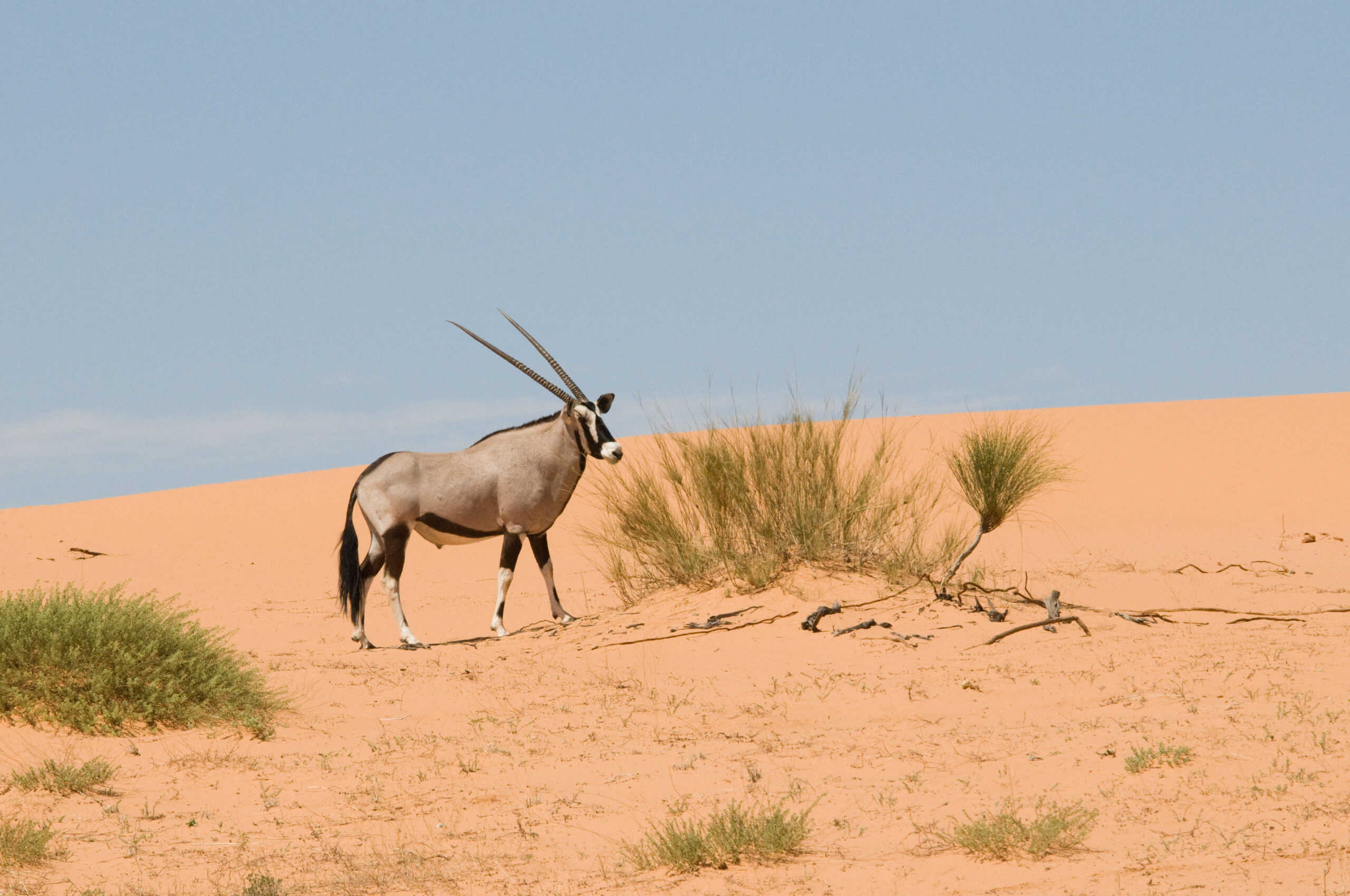Share this article
Wildlife Featured in this article
- Wild turkey
- Wild pig
- South Africa oryx
- Elk
- Cougar
- Mule deer
- Gray wolf
Here are the top 10 wildlife stories of 2023
A look back at the most-read stories published on TWS’ website for the past year
African oryx running wild in New Mexico. Snake reintroduction. Human shields and predators.
These are just some of the most popular news stories The Wildlife Society has published in 2023, covering the gamut of cutting-edge research on conservation, wildlife management, and the policies that affect our ecosystems.
The past year has seen the beginning of the implementation of wolf reintroduction to Colorado as well as a partisan divide that has affected the passage of some wildlife legislation. But wildlifers have nonetheless made great discoveries in furthering our understanding of ecology and wildlife populations management.
Here is the list of our top 10 most popular stories of 2023.
10. USFWS issues new Colorado gray wolf designation
The Colorado public opted to return gray wolves (Canis lupus) to the state in a 2020 ballot box vote. To help ease some of the regulatory restrictions on wildlife managers who will be working on the issue, the U.S. Fish and Wildlife Service issued a “nonessential experimental population” designation for the canids in Colorado. This will help ease potential human-wildlife conflicts as the project gets underway, the agency hopes.
9. What’s the best way to translocate snakes?
Massassauga rattlesnakes (Sistrurus catenatus) are listed as endangered in Canada due to habitat fragmentation and low numbers there. It’s been years since scientists have attempted to translocate the species. To learn more about the most successful practices in snake reintroductions, in general, one research team examined more than 100 translocation cases in an effort to better inform any future snake management actions to conserve the massassauagas.
8. JWM: Why has elk recruitment declined in New Mexico?
Elk recruitment has been declining for years in New Mexico. One recent study pointed the finger at predators as being a possible reason for these population drops. But new research shows that climate change may also be playing a major role.
7. 10 years later, translocated turtles find their way home
In 2010, an oil pipe operated by Enbridge Inc. burst into a tributary near the Kalamazoo River in Michigan. The resulting disaster affected a huge amount of wildlife in the area, including turtles. Researchers who had rehabilitated and translocated turtles away from the affected area returned a decade later to see if these turtles had moved back to the places where they were removed from.
6. TWS2022: Do cougars use artificial water sources to ambush prey?
Pumas have been observed killing deer around artificial drinking sources. Researchers wanted to know whether the big cats were cuing into these stations as good places to ambush their prey. They found that while they weren’t directly using the drinking sources, they might be following ungulates to the general areas around them.
5. Window decals create sticky situation for deterring bird strikes
Window decals can sometimes be effective ways to keep birds from smashing into them. But researchers found their success is all about placement. Many people put them on the inside of windows, as they are often easier to place—especially for windows at the top of tall buildings. But researchers found that decals placed on the outside of windows were much more effective at reducing bird strikes than those placed on the inside of windows.
4. Human shields can be lethal for midsized predators
When large predators like wolves (Canis lupus) or pumas (Puma concolor) are around, some bobcats (Lynx rufus) and coyotes (Canis latrans) choose to move closer to humans, thinking that the ‘human shield’ is the safer of two bad options. But research reveals that humans may actually cause more danger to these mid-sized predators. Many bobcats and coyotes that moved closer to humans while larger animal predators were around were killed by hunters and trappers.
3. Tough regulations work best to stem wild pig invasion
Since their introduction into the United States with European settlers, wild pigs have expanded quickly across the continent. Every state enforces different regulations to manage these pigs. Researchers examined the state of the invasive pig problem in many of these states and compared them with the effectiveness of each one’s regulations.
2. As the climate changes, wild turkeys aren’t keeping up
We’re more than a month past Thanksgiving, but the weather hasn’t cooled for wild turkeys (Meleagris gallopavo). Researchers have found that warmer, wetter weather early in spring may be throwing out of whack what used to be the birds’ nesting season. The invertebrate food they rely on may hatch earlier, meaning there won’t be enough for young poults if they hatch later on.
1. Rising oryx numbers may distress New Mexico ecosystem
You’d be mistaken if thinking that the best place to see South African oryx (Oryx gazella) this side of the Atlantic Ocean would be a zoo. The New Mexico Game and Fish Department first introduced these ungulates, also known as gemsbok, to the state as game animals, and they have taken off in some parts of the ecosystem there. The trouble is, these newcomers may outcompete native species like pronghorn {Antilocapra americana) and mule deer (Odocoileus hemionus) in New Mexico.
Header Image: They Wildlife Society’s top story featured he South African oryx. Credit: Chris Eason








